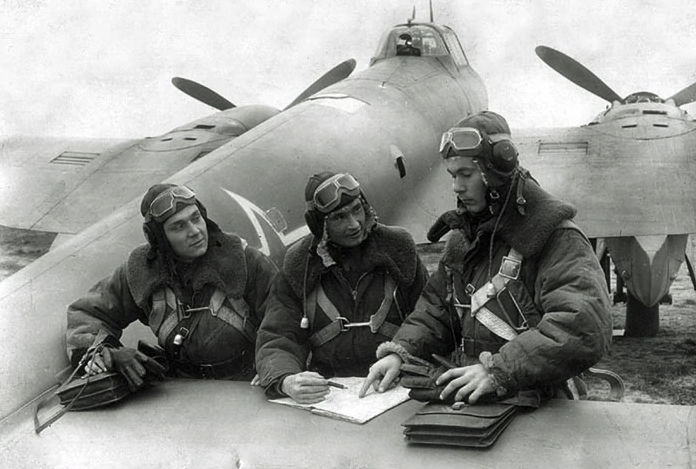WWII Soviet Pe-2 Outer Skin Wreckage Fragment - Eastern Front Combat Mission (Shot Down)



WWII Soviet Pe-2 Outer Skin Wreckage Fragment - Eastern Front Combat Mission (Shot Down)
Size: 4 x 5 inches
This is a one-of-a-kind chance to own an amazing artifact of a shot down Soviet Petlyakov Pe-2 Peshka outer skin wreckage fragment. This plane was shot down on a combat mission against the Germans along the Eastern Front. The Pe-2 was one of the main dive bombing ground attack aircraft used by the Soviet Union during WWII. This exclusive collection of wreckage fragments from a downed Soviet Pe-2 aircraft comes excavated and dug from a newly discovered plane and wreckage site along what was once the Eastern front of WWII. These skin fragments are in remarkable condition and show the intense fragmentation the plane felt on its impact. Many of the outer skin fragments still contain most of the original outer paint and camouflaged exterior as well as some rare paint fragments from the planes ID markers and insignia. We were able to privately obtain a large selection of pieces from this wreckage site including a wide range of large, medium and small pieces.
Petlyakov Pe-2 Peshka:
The Petlyakov Pe-2 Peshka (Russian: Pawn) was a dive bombing ground attack aircraft that was used by the Soviet Union during WWII. The Pe-2 had two Klimov VK-105PF engines that were capable of propelling it at speeds of up to 540 kilometers per hour. The armament of the first Pe-2 meanwhile consisted of two 7.62mm ShKAS machine guns, a ShKAS mounted in a dorsal position, and a single ShKAS mounted in the ventral position. The bombload consisted of up to 1,600 kg worth of bombs.
The total weight of the Pe-2 was around 5,870 kilograms empty with a wingspan of 17.1 meters and a total length of 12.6 meters. With a service ceiling of 8,800 meters, the Pe-2 had a climb rate of 430 meters per minute. Operational range was 1,500 kilometers.
Inside the "Peshka", the radio operator sat just behind the pilot, manning the dorsal turret but could crawl under the pilot's position to serve as bombardier. Furthermore, considering the strength it required to pull the elevators during takeoff, the radio operator was sometimes required to help the pilot lift up the control stick.
The reliability of the Pe-2 in the field was generally quite good, though the initial survivability rate was generally poor. This was due in part to the quick to jam ShKAS machine guns mounted as defensive armament and the positions they were mounted in which heavily restricted their arc of fire, allowing Axis fighters to quickly shoot down the Soviet bombers. To increase accuracy in bombing, the Pe-2 was given dive brakes for engaging into shallow dives.
Operational History:
By the time of Operation Barbarossa, numerous Pe-2s were in use with frontline units, though with the initial surprise of the attacks, most were destroyed on the ground. It wasn't until Soviet troops had managed to regroup that the Pe-2 finally was able to inflict some kind of losses upon German troops. Entering full-scale production, the Pe-2 was quickly standardized as a ground attack aircraft, becoming well liked among its crews. However, tragedy struck in 1942 with the death of Vladimir Petlyakov who was killed following a test flight in a Pe-2. From then on, the Pe-2 was used against German troops in the Eastern Front until the end of the war and later against Japan during the short resumed conflict in Manchuria and China. In total, around 11,400 examples had been produced during WWII.